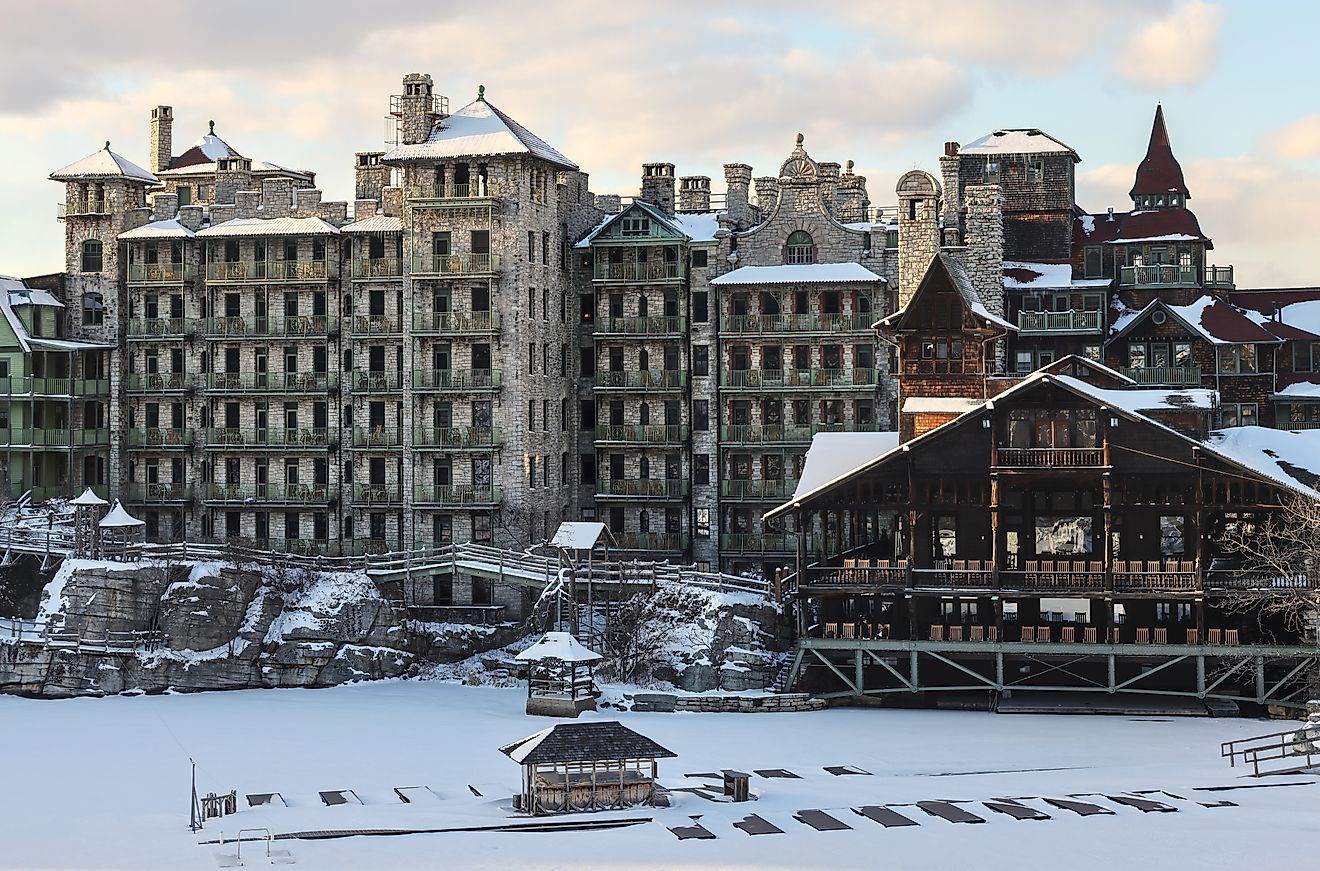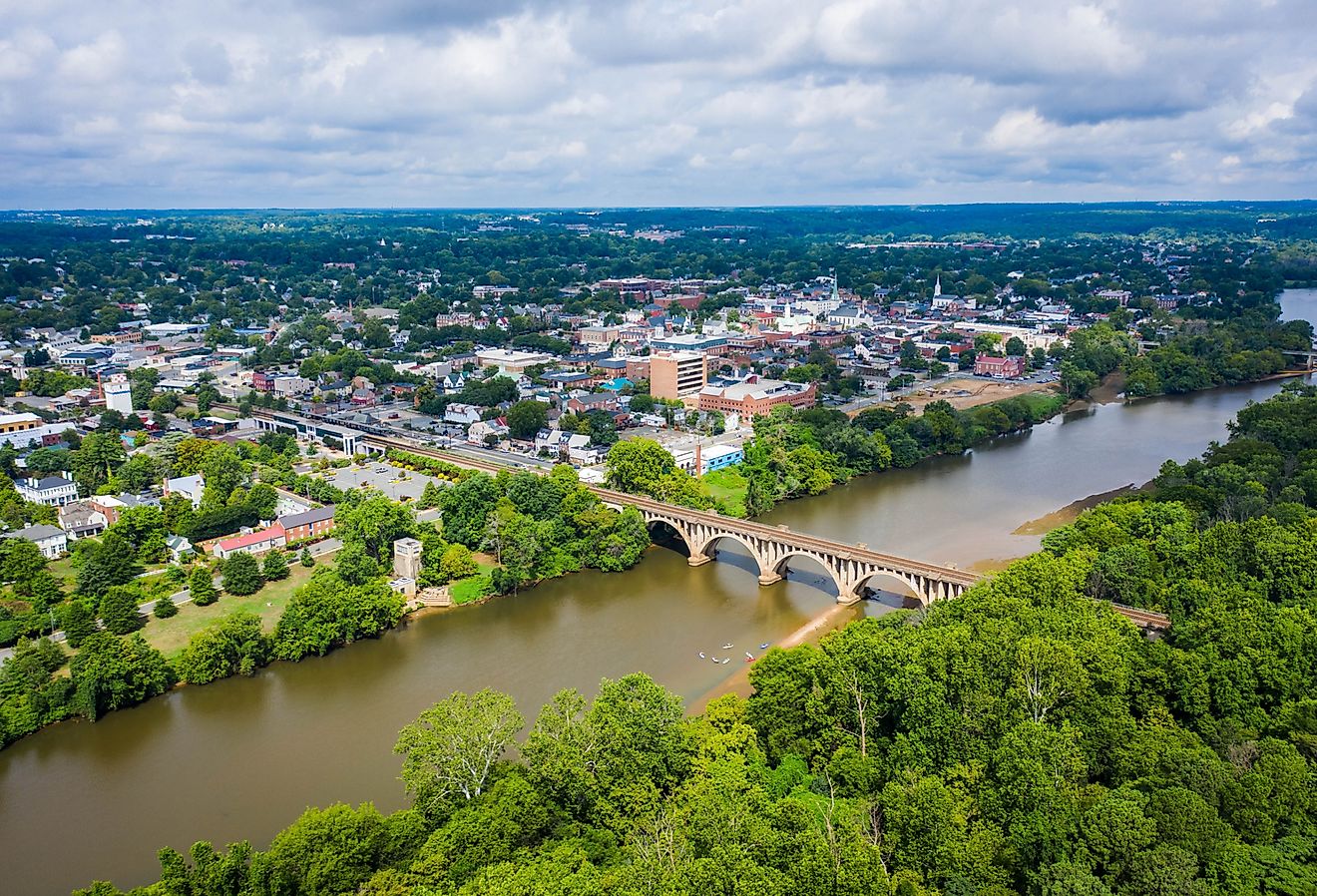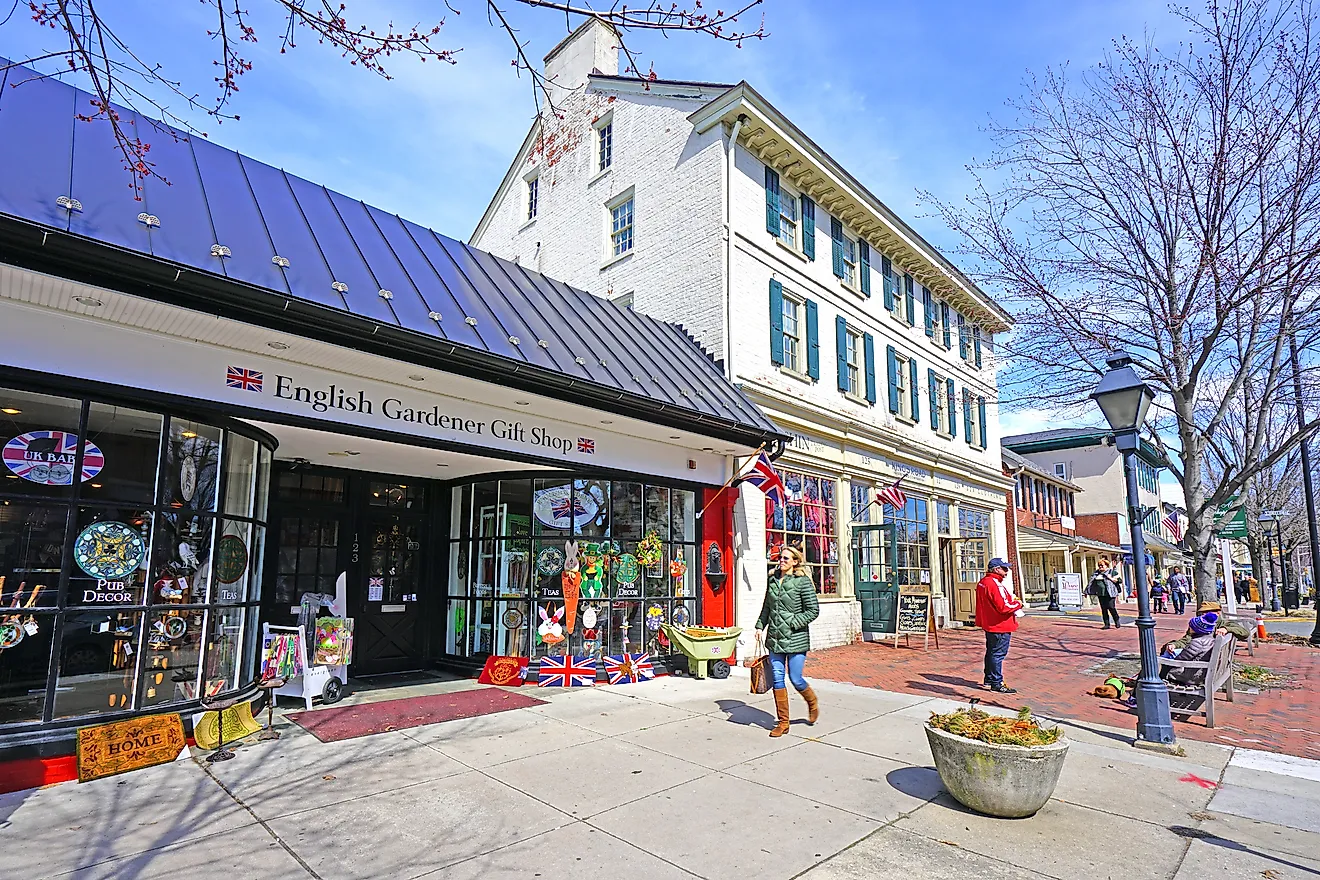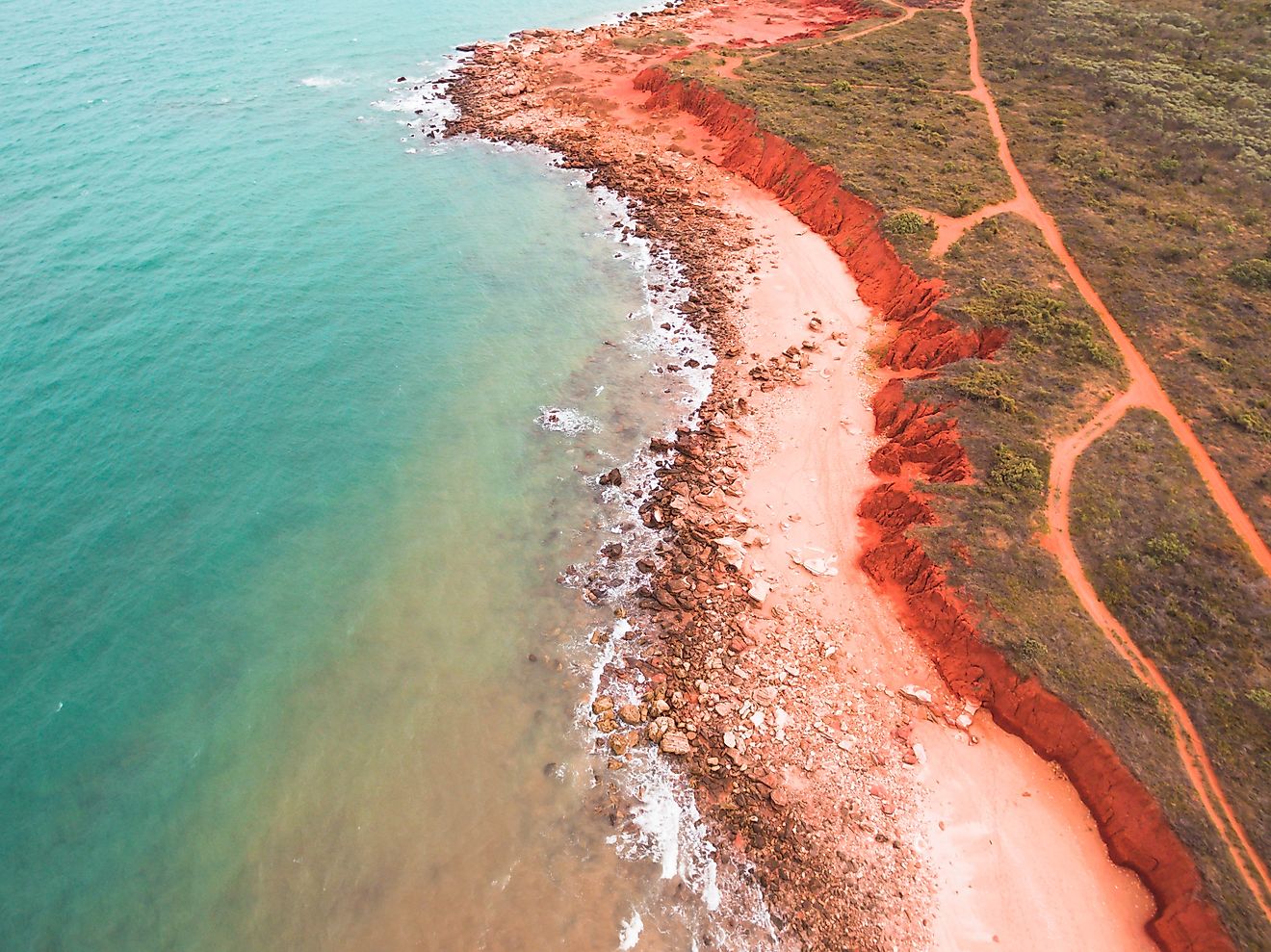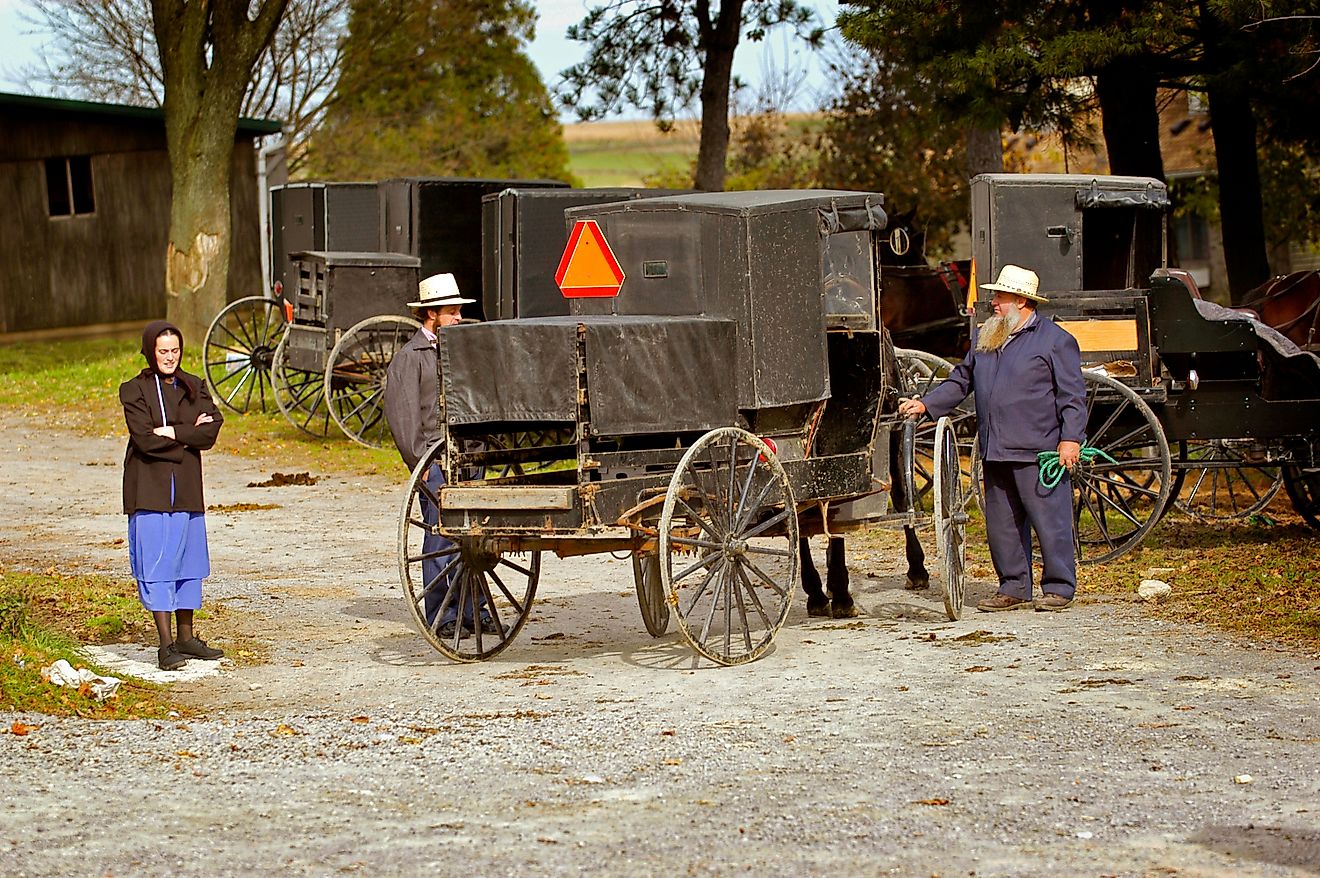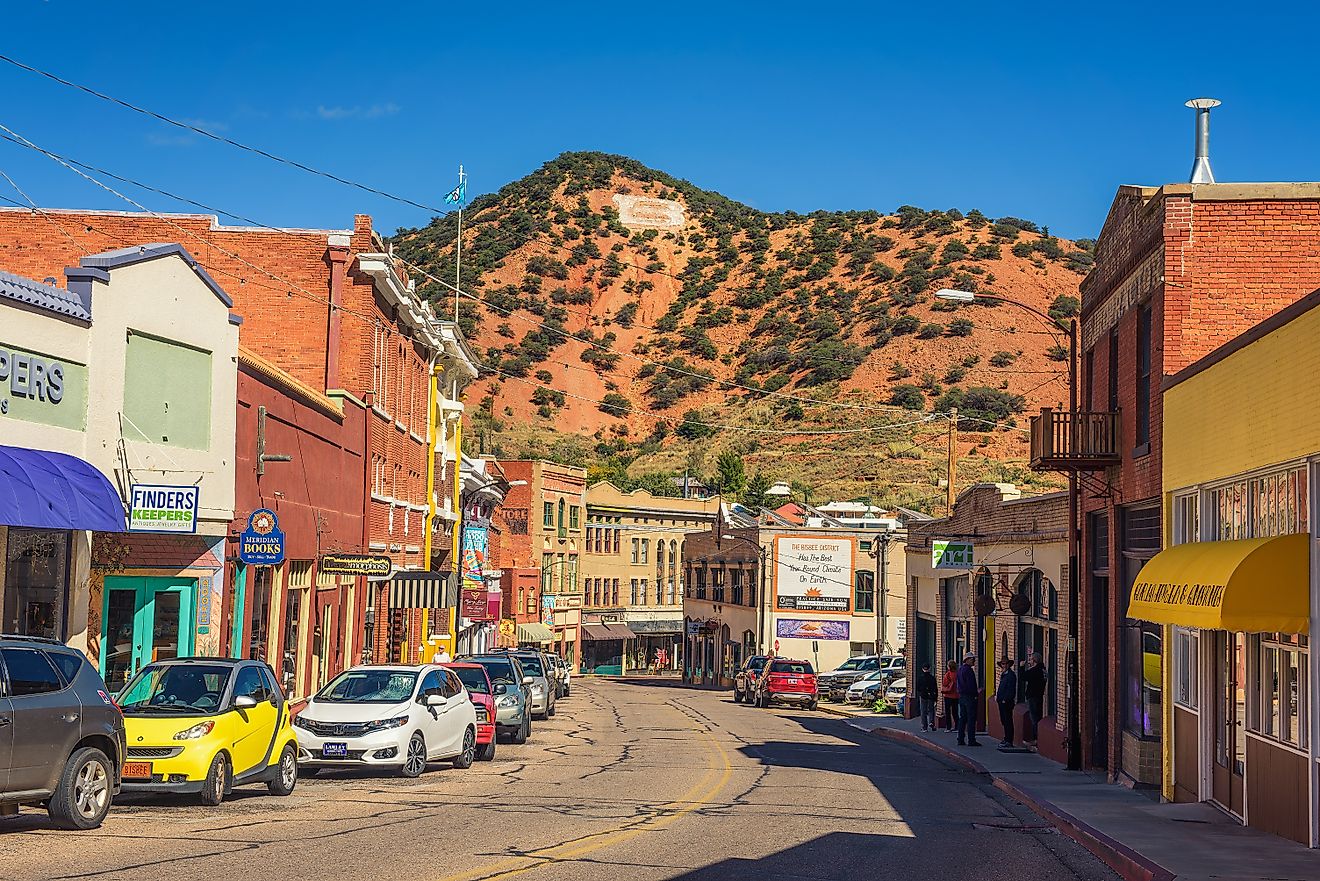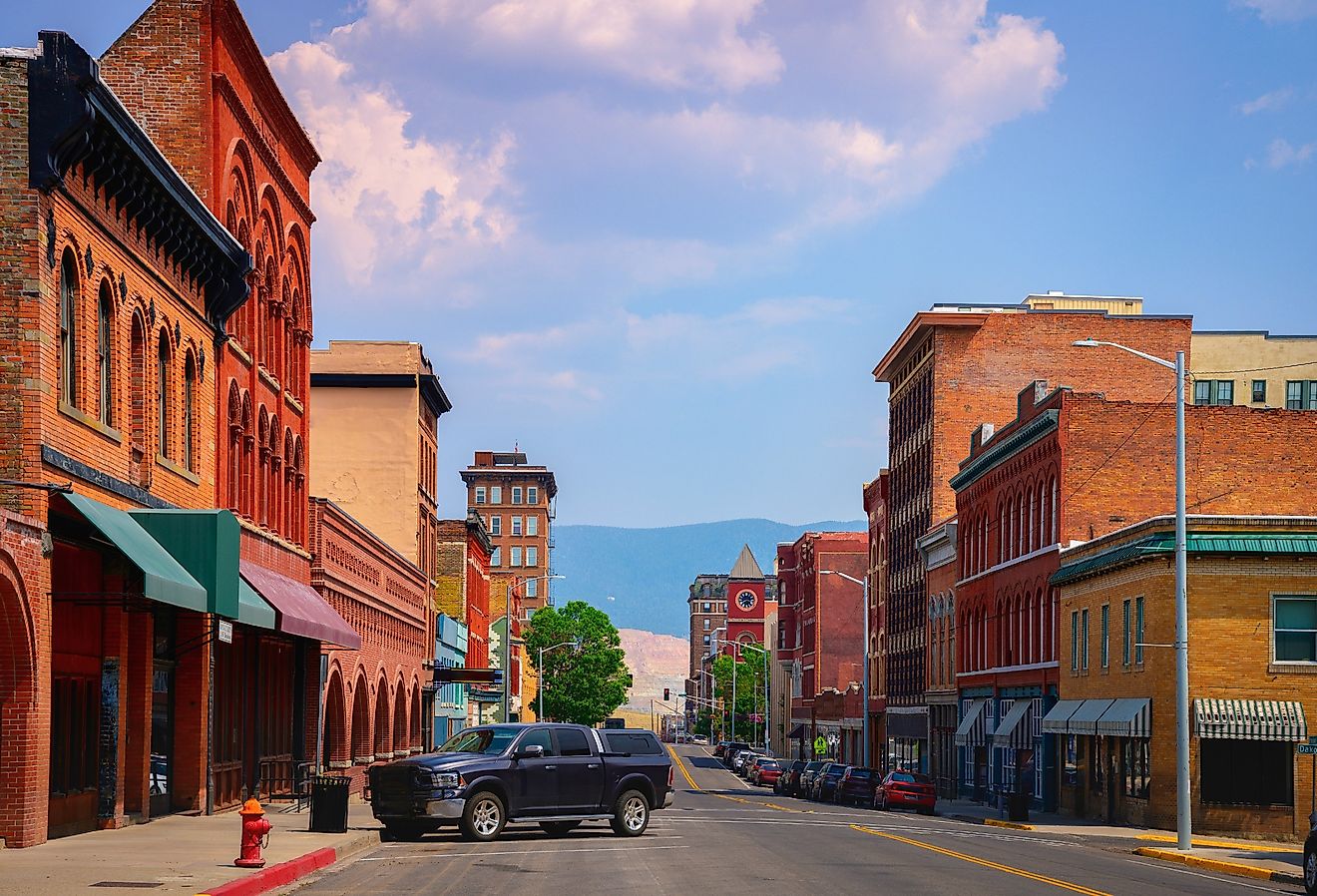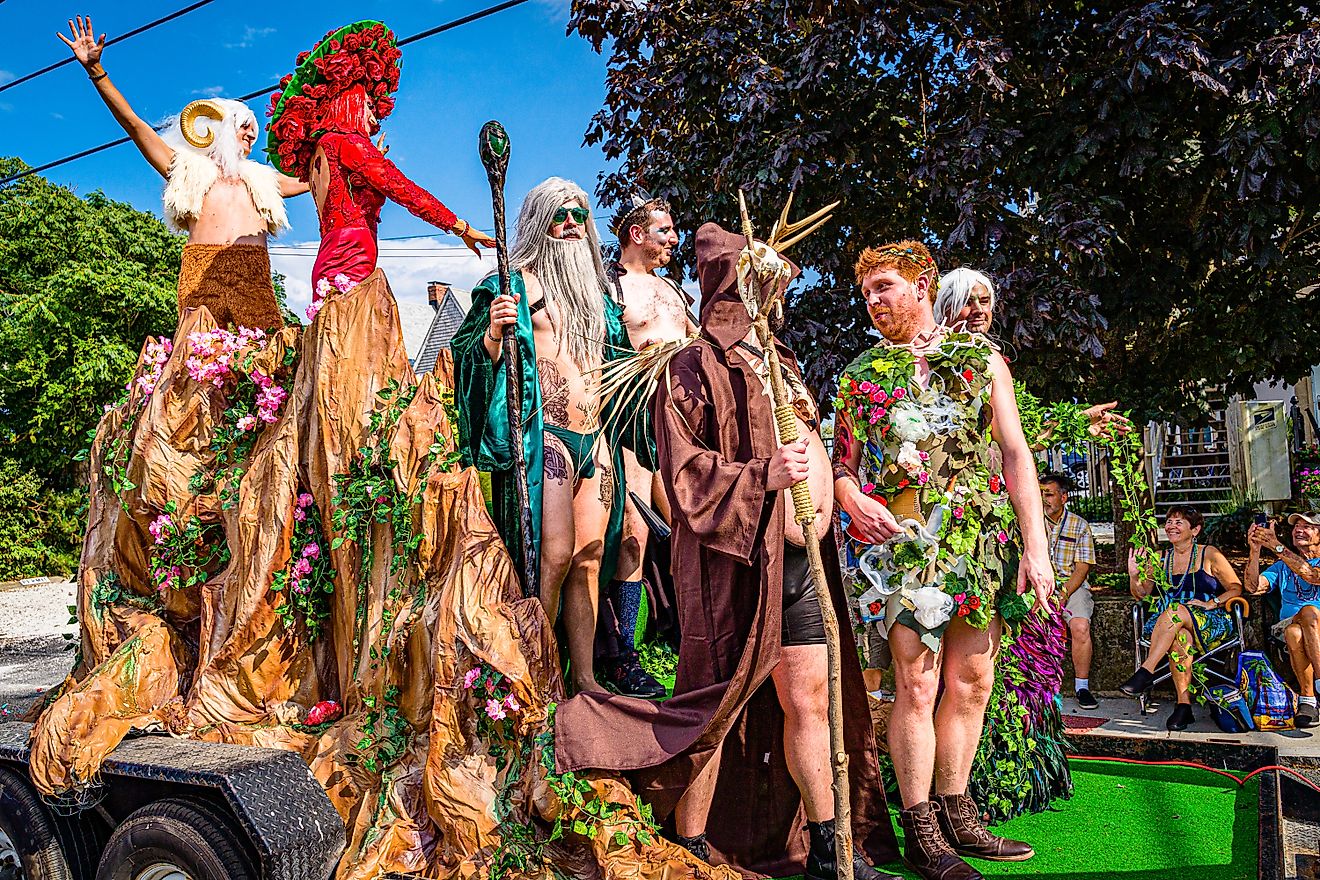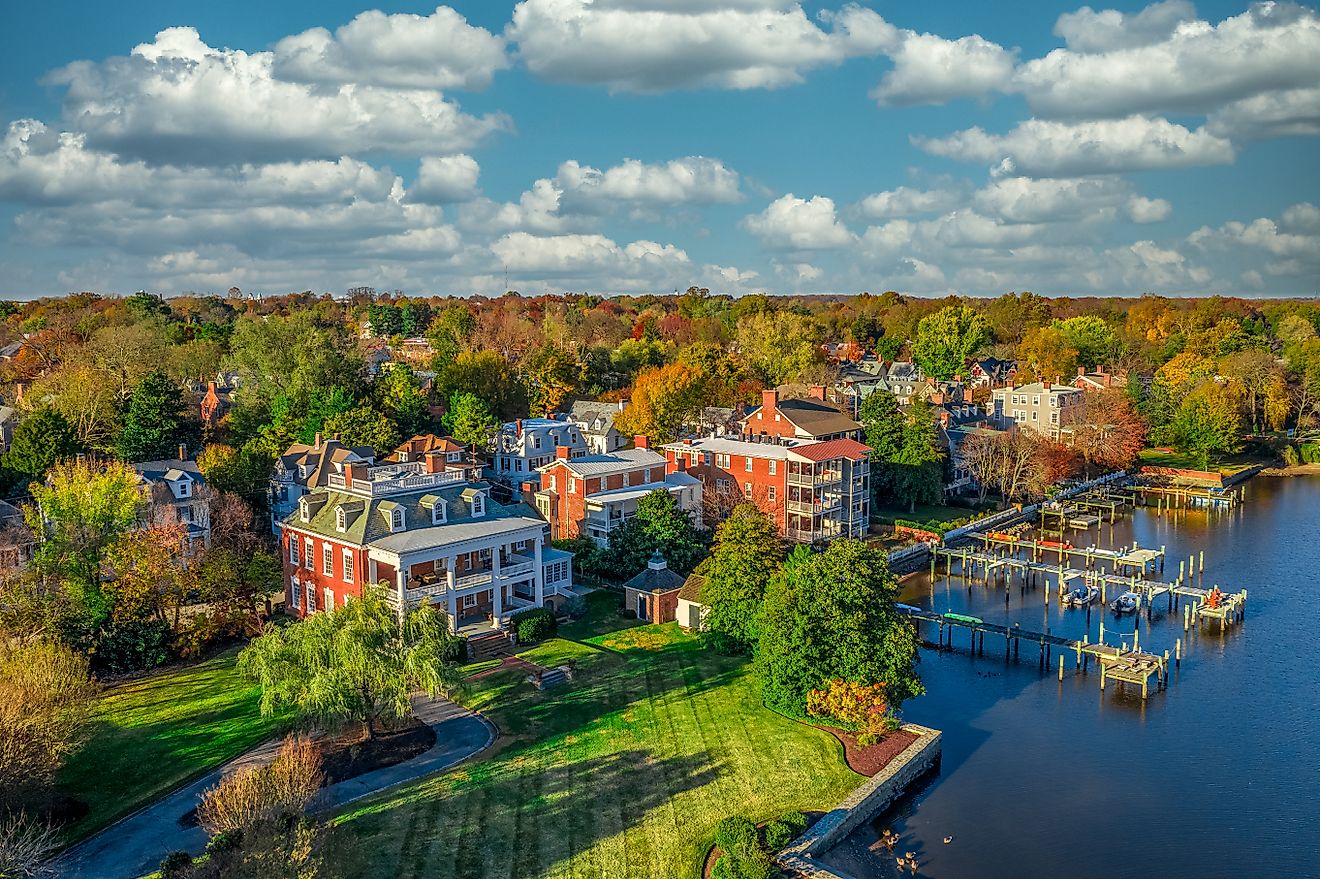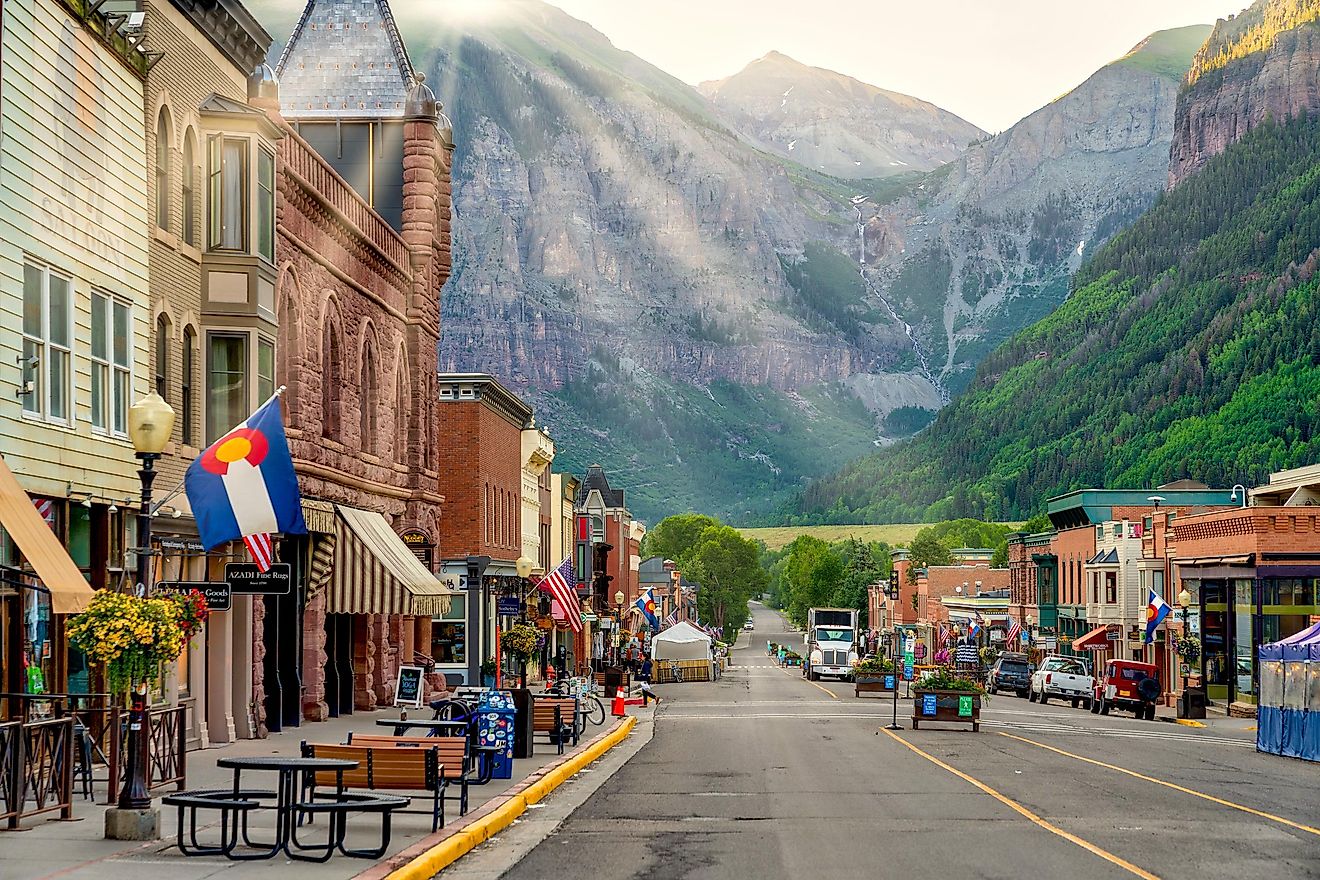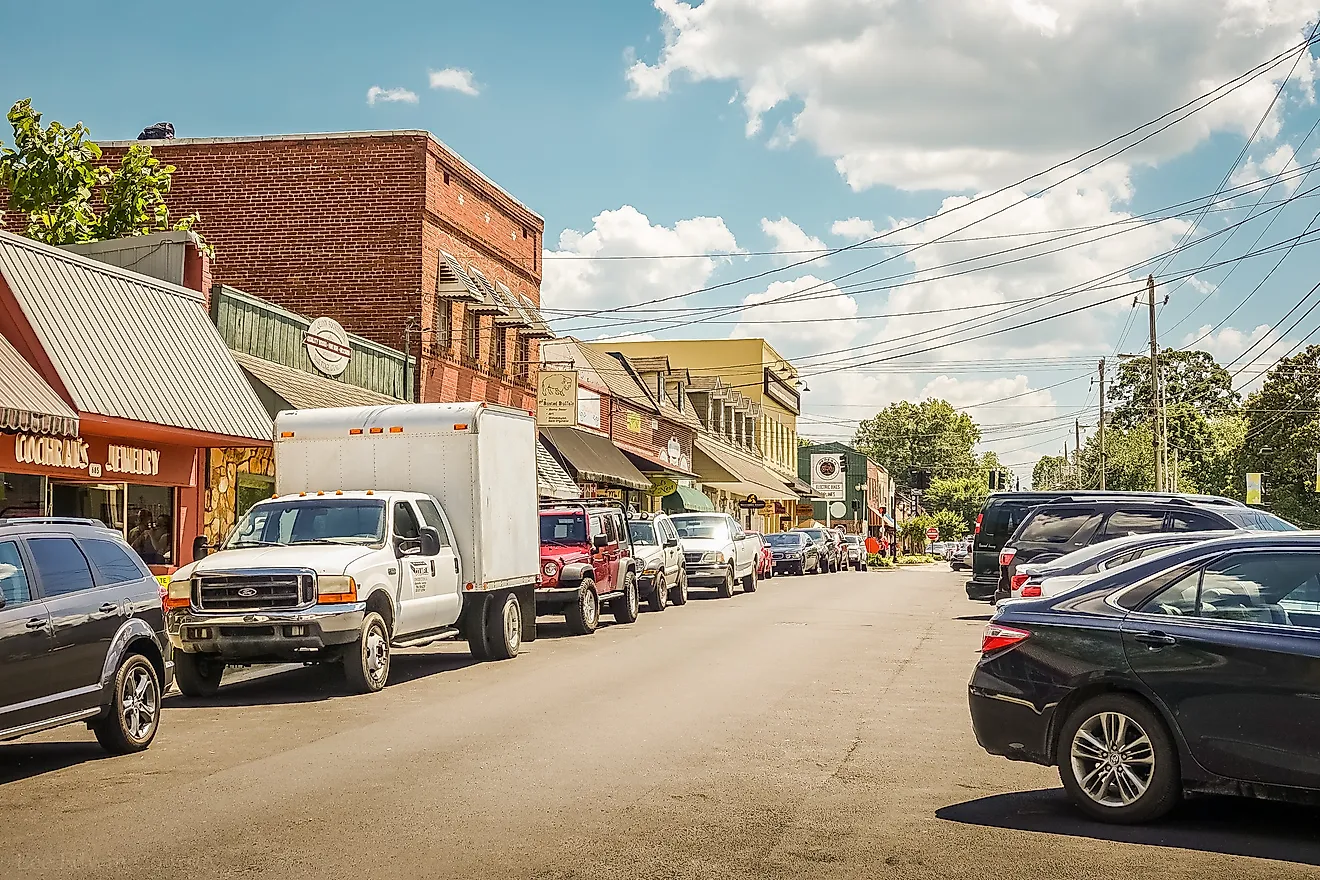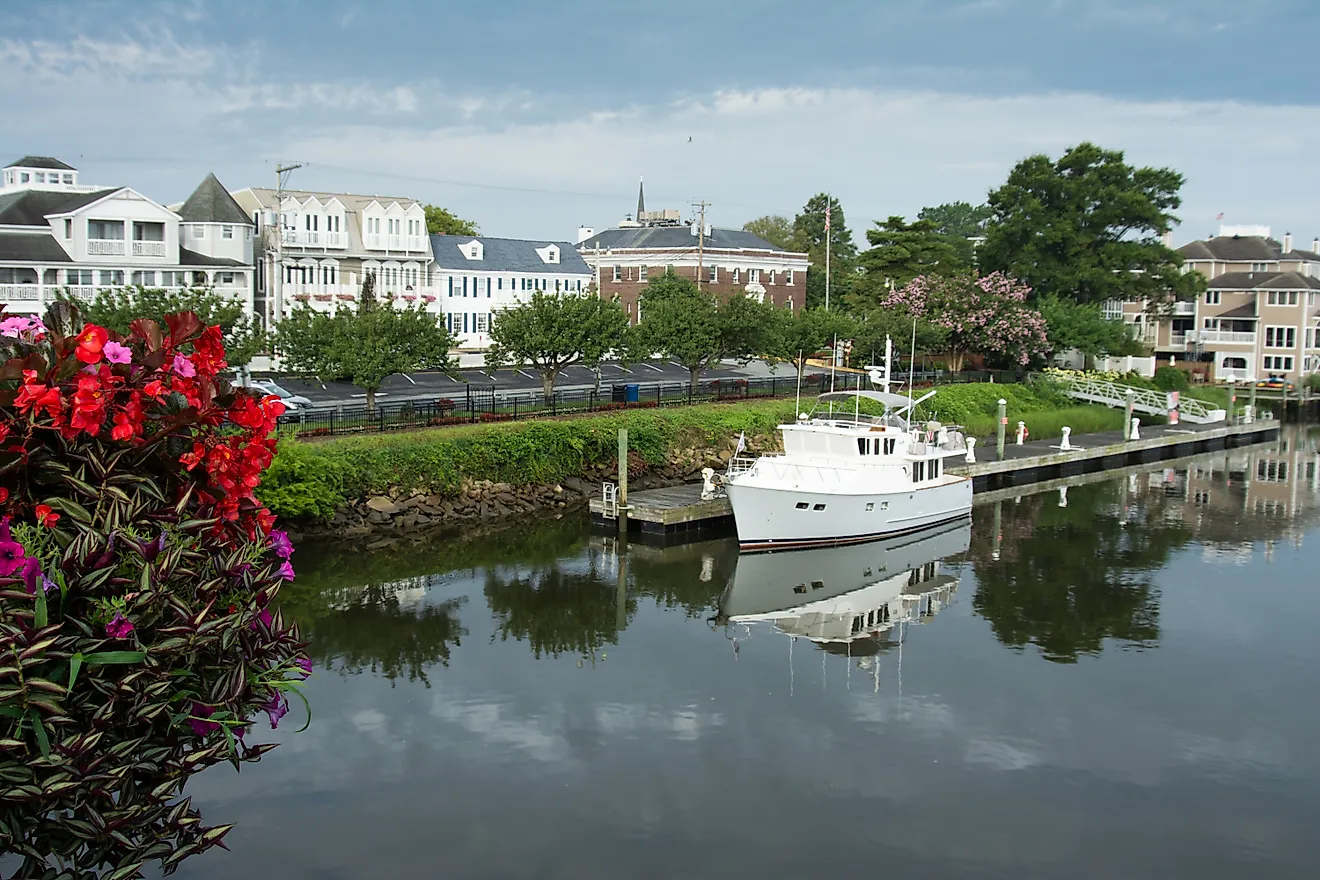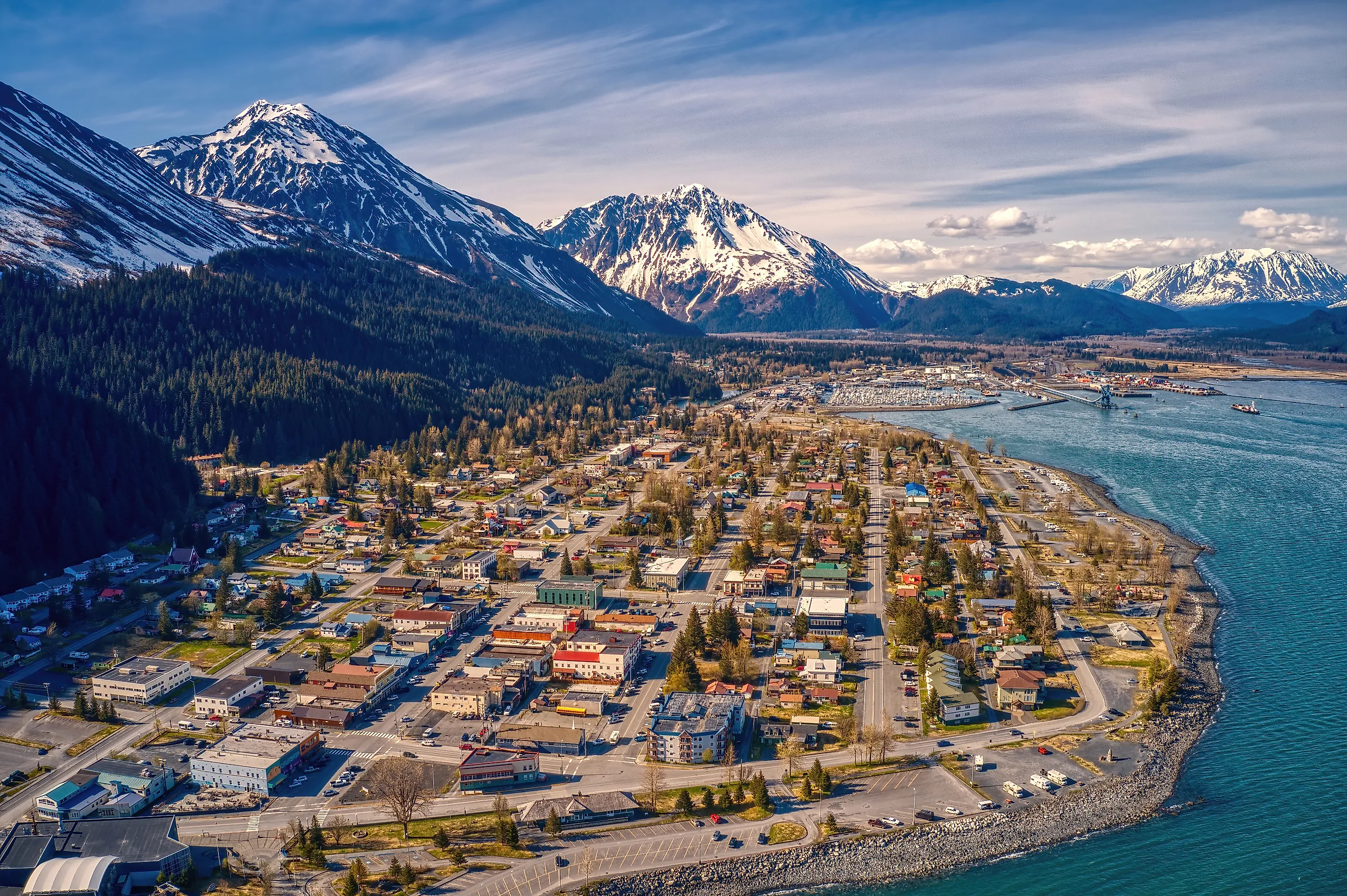
9 Picture-Perfect Main Streets In Alaska
Alaska is easily one of the most beautiful places in the US to visit. The northern state is home to incredible landscapes featuring snow-capped mountains, jaw-dropping glaciers, untouched wilderness, and the aurora borealis. You can see animals, such as seals and whales, that you may not encounter in other parts of the US, and strolling downtown corridors allows you to experience wild Alaskan wonders, as well as the human-made beauty of historical buildings and monuments. These nine small towns in Alaska offer some of the best picture-perfect main streets that will leave a lasting impression long after your trip comes to an end.
Ketchikan
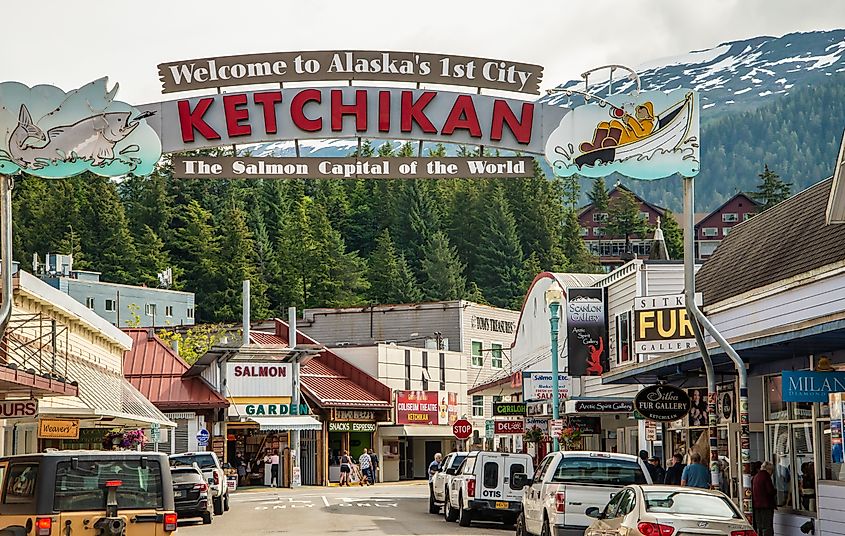
In southeastern Alaska, there is the small town of Ketchikan, a location ripe with idyllic scenery and historic sites to feast your eyes upon. Ketchikan rests on the southern Revillagigedo Island and is part of the Alexander Archipelago, south of Juneau. Originally a fishing settlement, Ketchikan later became a supply center for miners during the 1890s gold rush. The main street area of Ketchikan, known as Creek Street, features access to a stunning salmon spawning stream, a historic footbridge, a boardwalk, and a museum showcasing ever-changing exhibits.
Full of local Alaskan charm, Creek Street is a quaint boardwalk lined with shops, museums, and well-preserved homes. Created in 1903, the boardwalk is the location of Ketchikan’s former red-light district. One of the best places to relax and view the boardwalk is from the Ketchikan Creek footbridge. The unique vantage point makes for a beautiful backdrop for taking photos. On Dock Street is the Tongass Historical Museum, a place where visitors can learn about Ketchikan and its evolution throughout the years. Some of the exhibits include the city’s gold rush years and its history as a salmon fishing mecca. One of the greatest highlights of Alaskan small towns is the ample, easy access to nature. At the end of Creek Street, you can find Ketchikan Creek and Falls, where visitors can witness thousands of salmon fighting against the current and working their way up the creek.
Juneau
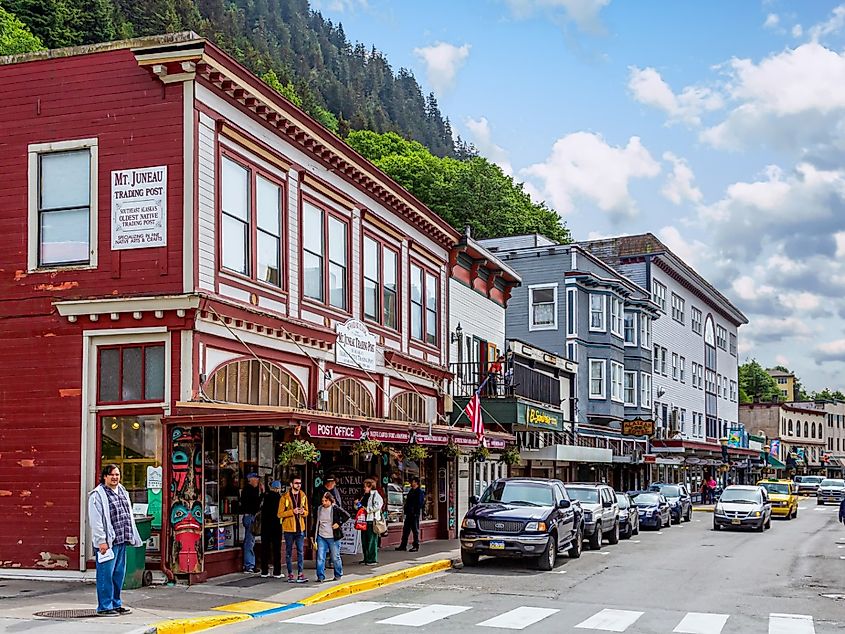
Discover the wild beauty and local favorites of Juneau, Alaska. Situated in the center of the Inside Passage, Juneau sits in the southeastern part of the state, on the Gastineau Channel. Juneau is the state capital and is sheltered from the Pacific Ocean by a section of islands 75 miles wide. The main street of Juneau is Franklin Street, lined with an array of entertainment options, including tram rides, fresh seafood, and a quaint historic bar and hotel.
Goldbelt Tram takes guests to incredible heights through the rainforest. The six-minute tram ride ascends 1,800 feet, where guests can then enjoy the breathtaking landscape and explore the trails. The top of the tramway also features a theater, restaurant, and gift shop. Dine on delicious crab cakes or a king crab bucket at Tracy’s King Crab Shack. Ample waterside views and a high-energy environment make meals at the crab shack even more enjoyable. To immerse yourself in a little local history, head to The Alaskan Hotel and Bar. First opened in 1913, the historic Alaskan hotel is the oldest operating hotel in the state. The architecture features a late Victorian Queen Anne style, and the bar includes live music for maximum entertainment.
Wrangell
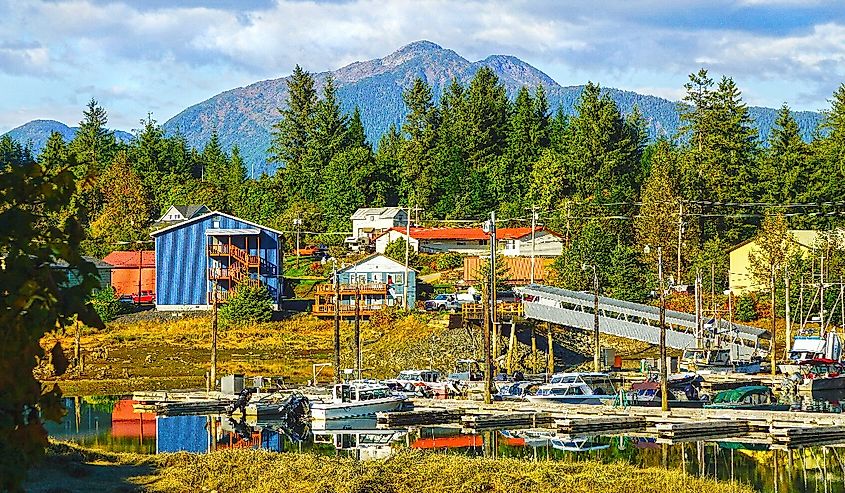
Near the mouth of the Stikine River is Wrangell, one of the oldest towns in all of Alaska. The town of Wrangell rests on the northwest end of Wrangell Island, south of Juneau and northwest of Ketchikan. Wrangell is the only city in the state to have existed under three flags and been ruled by four nations: Tlingit, Russia, England, and the US. The Tlingit people's influence, in particular, remains visible throughout the town. On Front Street, the main street of Wrangell, and its neighboring roads, you can find some of the cultural influences and exciting outdoor adventures.
Some of the biggest draws to visiting Alaska are the outdoor escapades. Breakaway Adventures offers a variety of tours to explore Alaska. Choose from an assortment of options, such as the Anan Bear Observatory tour to see bears up close, or take a LeConte Glacier tour to encounter hundreds of icebergs. Meanwhile, Totem Park is an example of Indigenous culture. The park's creation is in honor of Chief Kahlteen of the Kiks.ádi Clan. Visitors may take a tour with a local tribe member to learn about the stories behind the eye-catching totems and the rich history of the area. Nearby, on Shakes Street, is Chief Shakes Longhouse, a replica of the traditional Tlingit clan house of the Naanyaa.aayi Clan. The posts within the house are intricate replicas of the original posts, which are considered to be the oldest known Tlingit house posts in existence.
Seward
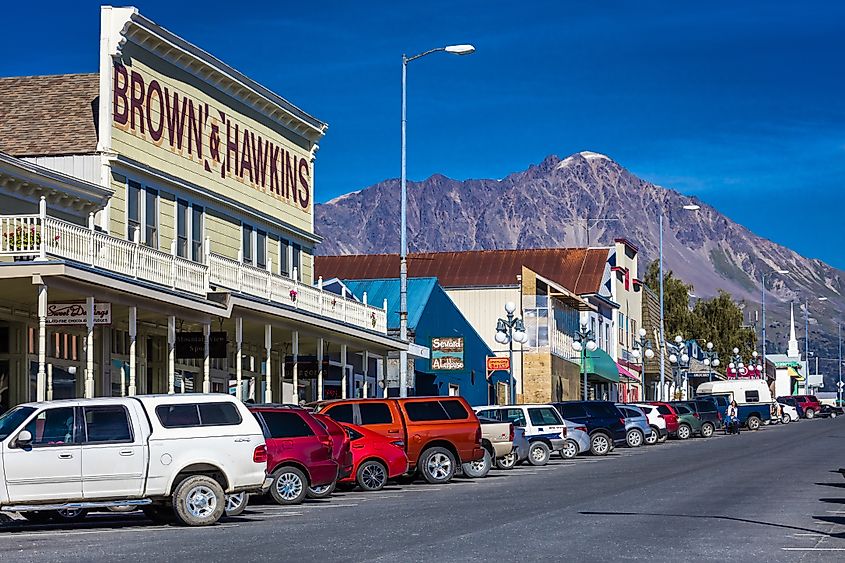
At the head of Resurrection Bay on the Kenai Peninsula is Seward, Alaska, a charming small town perfect for a vacation. In 1964, much of Seward was devastated by an earthquake that triggered fires and tsunamis. Current Seward offers a picture-perfect aquarium, waterfront, memorials, and murals that will have you reaching for your camera. Fourth Avenue is the main street area. Alaska SeaLife Center is one of those places where the magic of the sea is brought to you front and center. Located on Railway Avenue, the Alaska SeaLife Center is the only public aquarium in the state that combines marine research, education, and wildlife response facilities. Here, visitors may explore undersea kelp forests, meet birds in the aviary, watch steller sea lions and seals, and so much more.
Near the aquarium, you can bask in the natural beauty of Seward at Seward Waterfront Park. The park features a trail that passes by various landmarks and historic monuments along the way. Keep your eyes peeled, and you might see some local wildlife along the beach, such as sea birds, bald eagles, sea otters, sea lions, harbor seals, and the occasional whale. One of the best places to take in the scenery is the Seward Mariner's Memorial, which features a picturesque lighthouse overlooking Resurrection Bay with a brick inlaid compass rose and a wave wall. All around Seward, visitors can find murals created by The Mural Society, such as Seward's Native Roots Mural. The painting depicts the story of the Qutekcak, the Native history of the Resurrection Bay area, Jesse Lee Home's links to Seward, and homesteader Mary Lowell.
Fairbanks
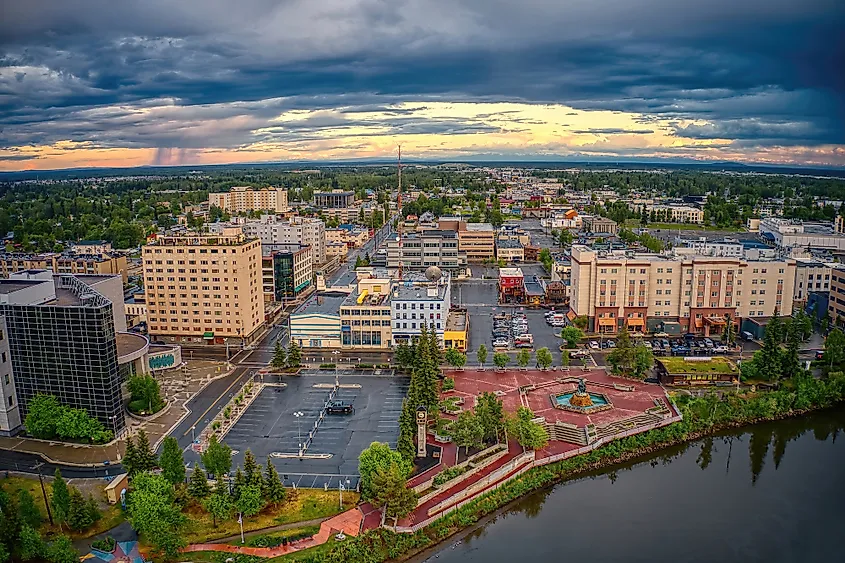
Lying along the Chena River, north of Anchorage and south of the Arctic Circle, is the picturesque small town of Fairbanks, Alaska. Originally inhabited by nomadic Athabaskan peoples, Fairbanks was founded in 1902 during a gold strike. This east-central Alaskan town’s main street area is full of opportunities to enjoy both human-made and natural wonders. Begin exploring the beauty of Fairbanks at the Golden Heart Plaza. Constructed in 1987, the plaza features a striking clock tower, a statue of an unknown family, an abundance of colorful flowers during the summer, and rows of twinkling lights during the winter. Golden Heart Plaza is a hub for seasonal events and a tranquil place to relax and take a stroll. Behind the plaza, you can find the stunning Chena River, which is perfect for canoeing, kayaking, and rafting activities.
To learn about the region and Alaska’s environment, head over to Dunkel Street to visit The Morris Thompson Cultural and Visitors Center. The displays showcase landscapes, wildlife, seasonal changes, clothing, cultural artifacts, and other distinctive aspects of the area. Throughout the year, the center also hosts events, films, and performances. Right behind the cultural center is an example of both natural and human-made beauty: The Antler Arch. Made of an assortment of caribou and moose antlers, the archway entrance to the downtown area is a picture-perfect backdrop for any selfie or photoshoot.
Sitka
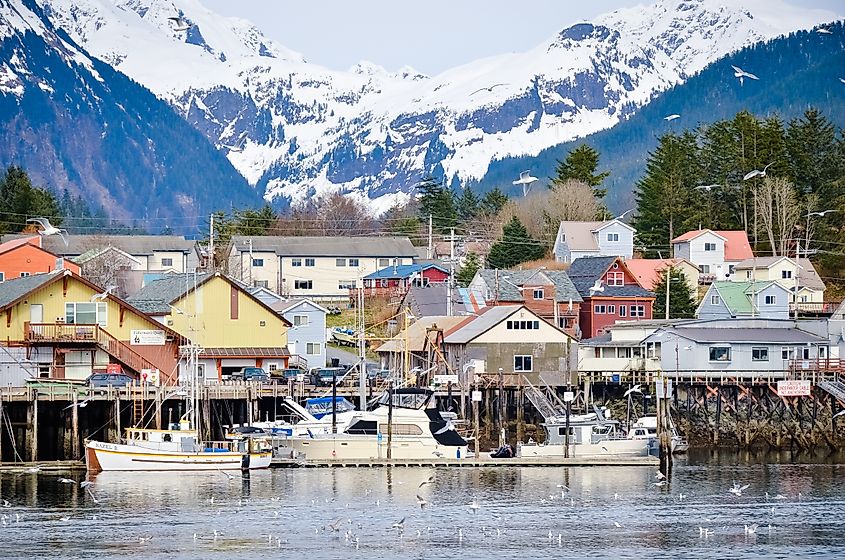
Uncover Alaskan history and dive into aquatic life in Sitka, Alaska. Located in southeast Alaska, Sitka sits southwest of Juneau on the west coast of Baranof Island in the Alexander Archipelago. Sitka is the only town in southeast Alaska that rests on the Pacific Ocean. The history of Sitka is influenced by the Tlingit peoples and a Russian man named Aleksandr Baranov, the first Russian governor of Alaska. You can take a close look at Russian influence on Sitka at the Baranof Castle State Historic Site. Often referred to as Castle Hill, the historic site is one of the most historically significant locations in Alaska. At this site, Tlingit people occupied the area and built a strategic fortification. Later, between 1804 and 1867, Russians occupied the site. Another prime example of Russian influence in Sitka is the Russian Bishop’s House on Lincoln Street. Completed in 1842, the house is one of North America’s few surviving examples of Russian colonial architecture.
The Sheldon Jackson Museum is the oldest museum in the state and offers a variety of classes, including still life painting and ravenstail weaving, and features numerous works of art. Back on Lincoln Street, visitors can explore marine wildlife at the Sitka Sound Science Center, which features a salmon hatchery and aquarium. Hands-on tours are also available, allowing guests to interact with the animals, clean the tanks, prepare food, and feed the underwater creatures.
Talkeetna
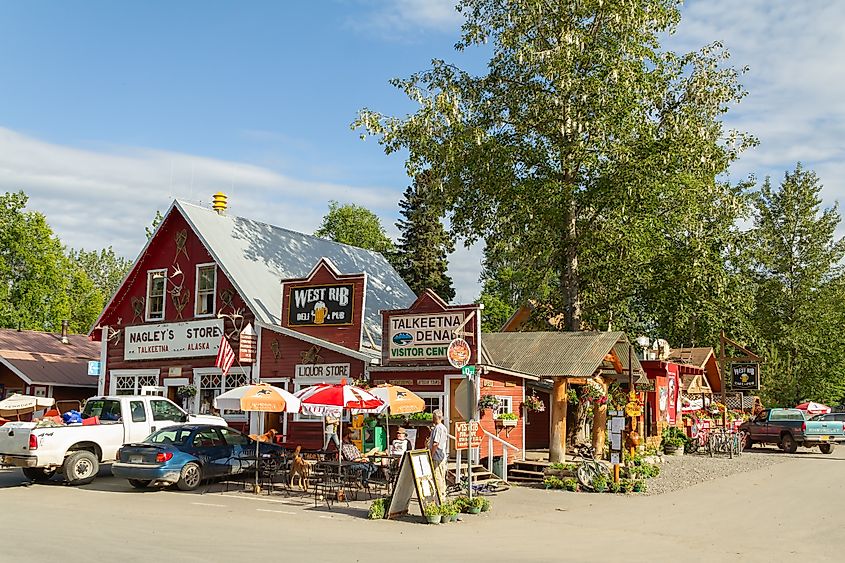
Talkeetna, Alaska, is a quintessential small Alaskan town. Located north of Anchorage in the Mat-Su Valley, Talkeetna rests in the southcentral part of the state, at the intersection between the Talkeetna and Susitna Rivers. In 1896, the founders established the small town as a mining town and trading post. Talkeetna features a block-long Main Street that is home to historical sites and a picturesque park.
Start your stay in Talkeetna with a cup of coffee on East Main Street at the Historic Nagley's Store. Since 1921, the storied shop has offered delicious coffees, espressos, hand-scooped ice cream cones, and other delicious treats. At the end of Main Street, on East Second Street, is the Talkeetna Riverfront Park, a place where you can witness the confluence of three rivers and the snowy peaks of the Alaska Range, including Denali on a clear day. The park is perfect for leisurely strolls along the water's edge and enjoying campfires come dusk. Over on D Street, you can soak in more local history at the Talkeetna Historical Society. Founded in 1972, the museum is inside the original Talkeetna Schoolhouse. The displays feature numerous subjects, including gold seekers, aviators, and trappers.
Homer
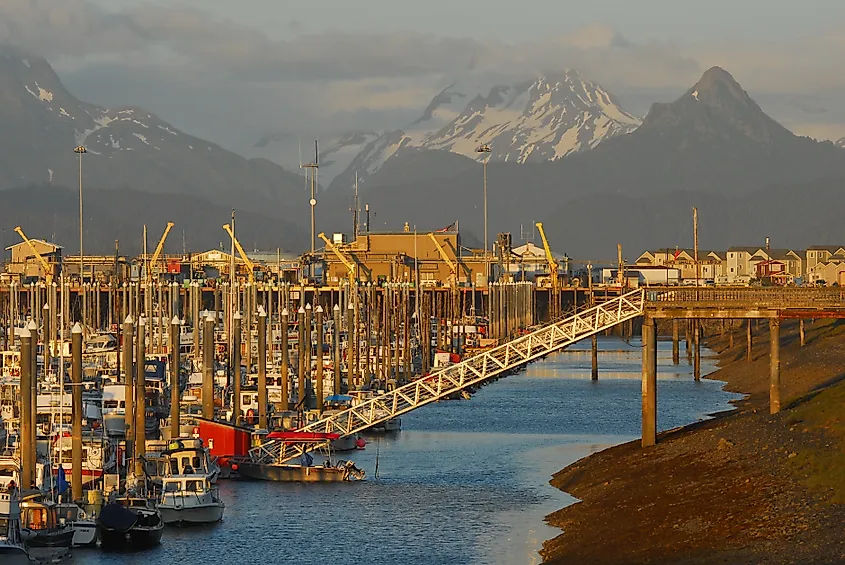
Find a mix of quaint local establishments, history, and the great outdoors to enjoy in Homer, Alaska. Located in the southern part of the state, Homer sits on the Kenai Peninsula, at the northern shore of Kachemak Bay. The city progressed around coal mines established in 1889 and received its name after Homer Pennock, a gold prospector. Homer’s Main Street offers a little bit of everything for a well-rounded vacation.
On Main Street is the Old Inlet Bookshop, a family-owned bookshop of third-generation booksellers. The bookshop carries over 20,000 titles, including sections dedicated to Alaska and polar exploration. Located on Bartlett Street is the Pratt Museum, a space featuring both outdoor and indoor exhibits that cover subjects such as marine ecology and a forested trail system. The museum preserves and explores a blend of culture, science, and art from the Kachemak Bay Region. Of course, no trip to Alaska is complete without spending some time in nature. The Alaska Maritime National Wildlife Refuge Visitor Center, situated on Sterling Highway, is home to millions of birds and thousands of islands. To fully explore the gorgeous coastlines, plantlife, and steaming volcanoes, visitors can access the site by boat or ferry.
Skagway
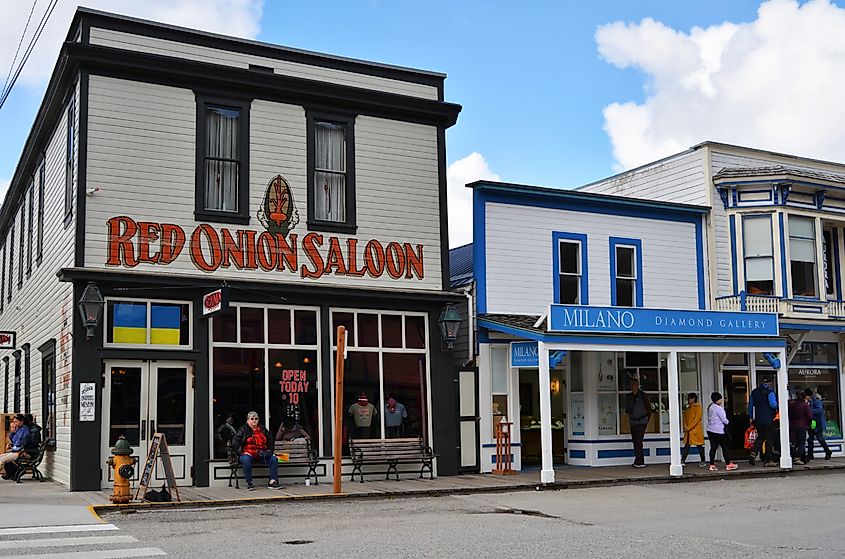
Northeast of Juneau, Alaska, at the northern end of Lynn Canal, lies Skagway, Alaska, an ideal location for historical and outdoor adventures. Like many Alaskan towns, Skagway’s history intertwines with the gold rush era. Skagway, founded in the 1890s, was the gateway to the Yukon and Klondike goldfields. Broadway, the Main Street of Skagway, is home to an array of entertainment options.Grab a bite and learn about some local history at the Red Onion Saloon. Established in 1898, the saloon has undergone significant changes since its opening. Now, the building functions as a restaurant, serving dishes such as pizza and nachos, and as a museum, retelling tales of the saloon during the bustling gold rush period.
Next on your Skagway adventure, check out the Skagway Centennial Statue. The large bronze sculpture was built to commemorate Skagway’s 100th anniversary and features a typical scene at the Chilkoot or White Pass trails, where prospectors roamed in search of gold. Speaking of which, one of Skagway’s greatest tourist attractions is the Klondike Gold Rush National Historical Park, which preserves the history of the gold rush through exhibits that include restored historic buildings and artifacts.
Alaskan small towns are brimming with beauty. Opportunities for enjoying nature abound in the state, with the Ketchikan Creek and Falls in Ketchikan, the Alaska Maritime National Wildlife Refuge Visitor Center in Homer, and the Alaska SeaLife Center in Seward. Even a blend of natural and human-created beauty is evident in places like Fairbanks, as seen in the Antler Arch. The history of these towns is fascinating, and visitors can learn more through places like Skagway's Red Onion Saloon, Sitka's Baranof Castle State Historic Site, and Wrangell's Totem Park. While much of Alaska is rural, there is still plenty of access to excellent dining options, such as Tracy's King Crab Shack in Juneau and Historic Nagley's Store in Talkeetna, which also offers a glimpse of local history. In Alaska's small towns, visitors can find an abundance of photo-worthy moments and memories to last a lifetime.
